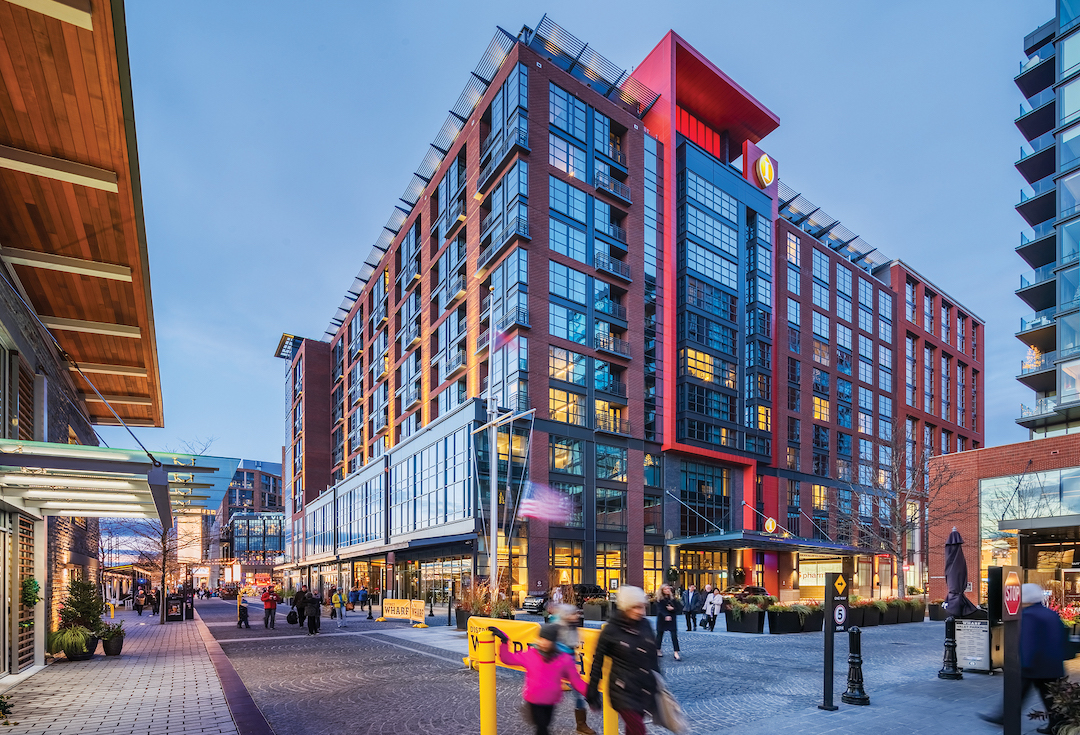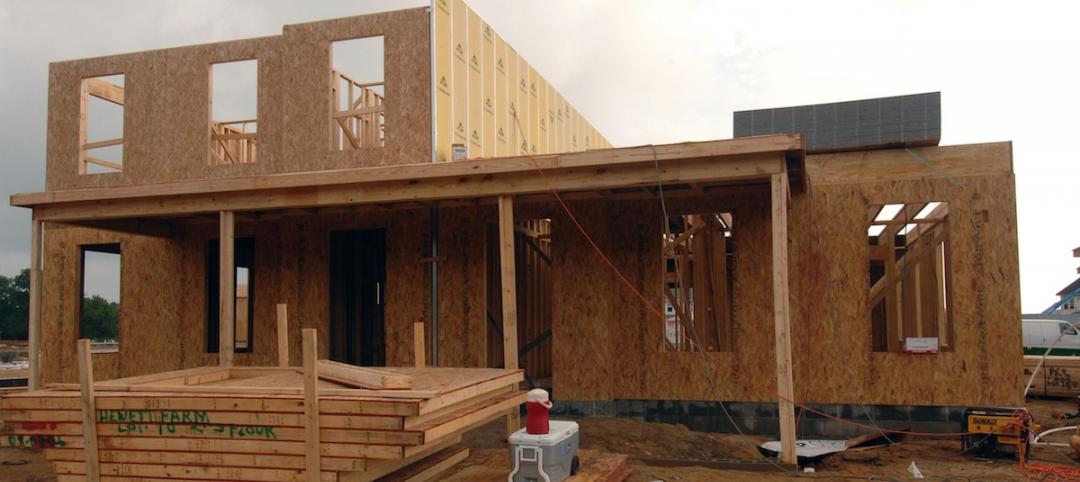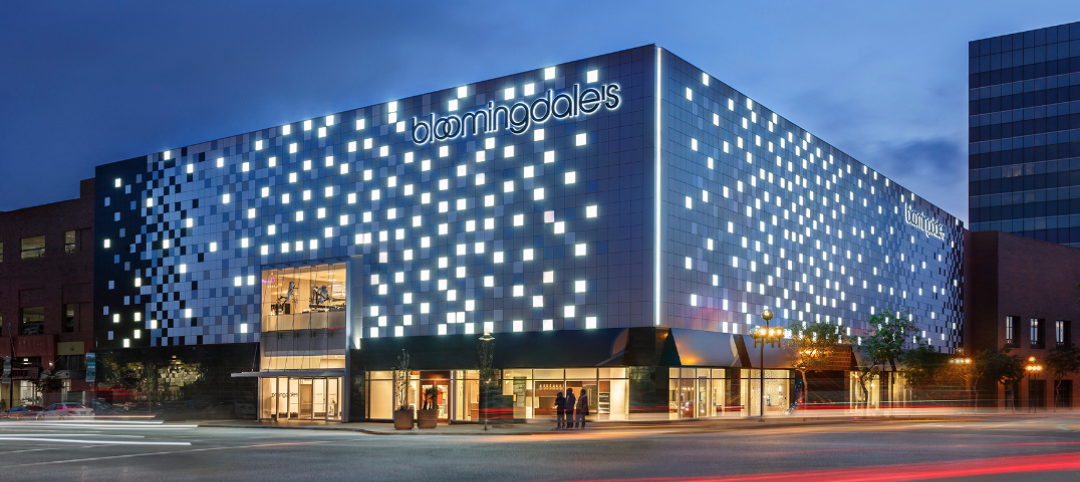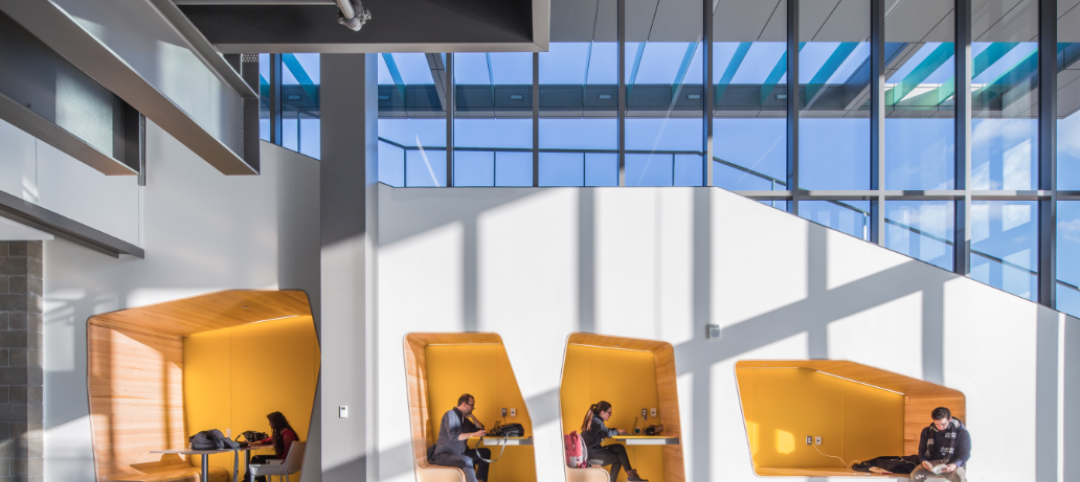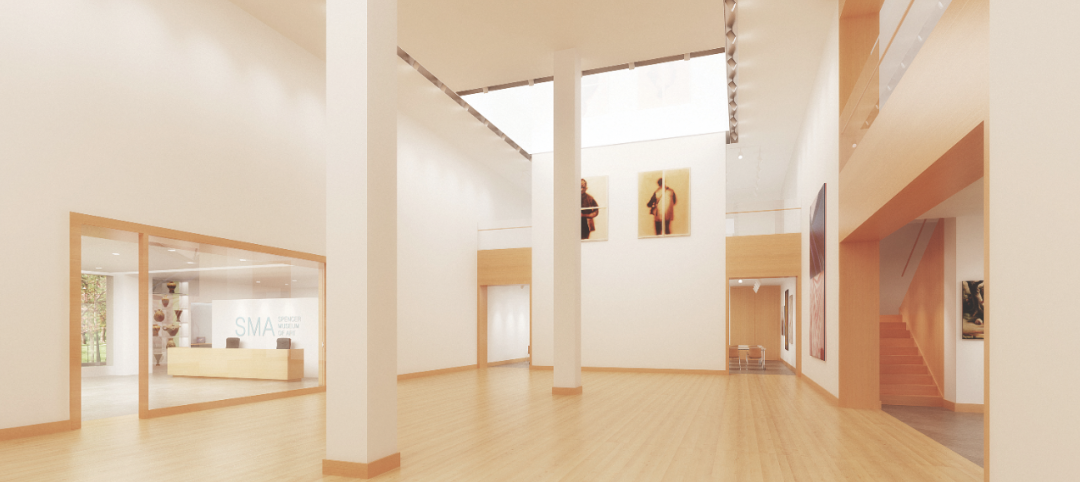Hospitality is hot—and, as we shall see, it’s also cool. Very cool.
The global hotel construction pipeline hit a 10-year high in 2018, according to Lodging Econometrics. In the U.S., nearly 670,000 rooms were in development or under construction last year—116,000 rooms shy of the 2008 peak. New York, Los Angeles, Nashville, Dallas, and Houston are particularly robust.
Upgrading the guest experience is a major focus of the sector. “Amenities are getting designed early,” says Ed Cettina, CEO, Global Building Construction, AECOM.
In some cases, the property is conceived around amenities, particularly dining and wellness spaces. A growing number of hotels and resorts have partnered with third-party restaurateurs to create multiple dining options under the same roof. “Large resorts might have seven to fifteen food and beverage venues,” says Eddie Abeyta, AIA, LEED AP, Principal, Chief Design Officer, HKS.
Lush spas are a must for new four- and five-star properties. In the casino/resort submarket, “there is a trend to capture more overnight stays by offering well-appointed spas for spouses,” says Brent Hughes, Vice President of Operations, C.W. Driver Companies.
Related content: Top 110 Hotel Architecture Firms for 2019
Related content: Top 70 Hotel Engineering Firms for 2019
Related content: Top 85 Hotel Construction Firms for 2019
Fitness and wellness are strong themes in many new developments. The recently opened Equinox Hotel at New York’s Hudson Yards boasts “the world’s most advanced fitness experiences, 24 hours a day.” Equinox owns hundreds of upscale gyms nationwide, but Hudson Yards is its first in the hospitality realm—and, at 60,000 sf, its largest.
Some properties are offering medical treatment, even surgical facilities, on site, says Ben Martin, HKS’s Principal and Director of Consulting. Hair transplants, Botox, liposuction, and nips and tucks can be had in private resort settings offering luxurious recovery rooms.
Hospitality sector turns to destination tourism
A new resort will offer guests an agritourism experience. The project, being developed by a well-known brand, addresses two strong industry trends: wellness and regional authenticity, says Melissa Voelker, AIA, NCARB, LEED AP, HKS’s Senior Vice President, Hospitality Group. Located in a pastoral setting about two hours from Philadelphia, the resort will offer rest, relaxation, spa pampering, and excursions to local farms to harvest fruits and vegetables.\
Participants will then trek to a resort restaurant for a lesson from the chef in preparing the harvest for that night’s dinner. “Tourism is changing,” Voelcker says. “Travelers are looking for destinations where they can touch the community and the lifestyle.”
Tourists are also demanding venues in far-flung outposts, even in the Arctic Circle and Antarctica. “Cold is the new hot,” says Martin. Norway’s Svart Hotel is billed as “the world’s first energy-positive hotel concept by the Arctic Circle.” Set to open in 2021, the generously fenestrated donut-shaped structure will offer panoramic views of a glacier, arctic landscape, and the Northern Lights. At the other end of the earth, the White Desert Resort in Antarctica serves those who want “a carbon-neutral experience that is as luxurious as it is adventurous.” Travelers can check out the local Emperor penguins.
At a more mundane level, hotels are delivering a home away from home experience with large-screen TVs and digital entertainment options, says Hughes. Guests want to binge watch their favorite Netflix shows and view YouTube clips on the road, just like at home. “Wi-Fi is incredibly important,” Hughes says. “Bad Wi-Fi will definitely get mentioned on Yelp.”
Technology is also having a big impact behind the scenes, particularly on project programming and preliminary design. Leo A Daly designers use tools powered by artificial intelligence to compare thousands of possible building forms and parameters—site topography, zoning requirements, the structure’s footprint, orientation, guest room sizes, and corridor widths. AI tools can crunch hundreds of thousands of factors, taking into account the clients’ financial models and looking at the ramifications of different design parameters, and produce a dozen basic building models. From there, designers can evaluate the options for presentation to the clients.
The technology reduces the time needed to develop the basic outline of a design, leaving more time to explore the finer aspects, says Ryan D. Martin, AIA, NCARB, Vice President, Director of Hospitality Architecture, Leo A Daly. AI-driven tools are good at repetitious, rule-of-thumb processes. “We’re trying to let AI do that, so we can spend more time on the fun stuff,” he says.
AI-aided models can incorporate empirical business data, such as projected revenue per room, to guide designers’ decisions on the guest experience, functional flow, and spatial adjacencies within the financial context of the project. “AI lends credibility to the decisions we make,” says Martin.
AI tools are not right for every project, says Martin. “Some are too small; some do not have enough variation in them. But they are increasingly a part of our process.”
HOTEL SECTOR TAKING IN MODULAR
Hospitality project innovation is extending to construction techniques. Marriott International said in April that it will build the world’s tallest modular hotel in New York City. The $65 million, 360-foot-tall AC Hotel New York NoMad is scheduled for final on-site assembly in late fall, with a late 2020 planned opening. The property’s 168 prefabricated fully furnished guest rooms will be stacked on top of a traditionally built podium.
Since 2017, Marriott’s development partners in North America have opened 31 low-rise structures that incorporate prefabricated guestrooms or bathrooms. The hospitality giants’ goals for modular include reducing construction costs for its franchisees, speeding up scheduling, and coping with the U.S. construction labor shortage.
Innovation in programming, design, and construction is making the hospitality segment a highly engaging market for AEC firms.
MORE FROM BD+C'S 2019 GIANTS 300 REPORT
Related Stories
Giants 400 | Sep 17, 2015
AIRPORT SECTOR GIANTS: KPF, Hensel Phelps, Jacobs top rankings of nation's largest airport terminal sector AEC firms
BD+C's rankings of the nation's largest airport terminal sector design and construction firms, as reported in the 2015 Giants 300 Report.
Giants 400 | Sep 15, 2015
HOTEL SECTOR GIANTS: Gensler, AECOM, Turner among nation's largest hotel sector AEC firms
BD+C's rankings of the nation's largest hotel sector design and construction firms, as reported in the 2015 Giants 300 Report.
Giants 400 | Sep 10, 2015
INDUSTRIAL SECTOR GIANTS: Stantec, Turner, Jacobs among top industrial AEC firms
BD+C's rankings of the nation's largest industrial sector design and construction firms, as reported in the 2015 Giants 300 Report
Giants 400 | Sep 10, 2015
MILITARY SECTOR GIANTS: Clark Group, HDR, Fluor top rankings of nation's largest military sector AEC firms
BD+C's rankings of the nation's largest military sector design and construction firms, as reported in the 2015 Giants 300 Report
Giants 400 | Sep 8, 2015
RETAIL SECTOR GIANTS: Callison RTKL, PCL Construction, Jacobs among top retail sector AEC firms
BD+C's rankings of the nation's largest retail sector design and construction firms, as reported in the 2015 Giants 300 Report
Giants 400 | Aug 7, 2015
GOVERNMENT SECTOR GIANTS: Public sector spending even more cautiously on buildings
AEC firms that do government work say their public-sector clients have been going smaller to save money on construction projects, according to BD+C's 2015 Giants 300 report.
Giants 400 | Aug 7, 2015
K-12 SCHOOL SECTOR GIANTS: To succeed, school design must replicate real-world environments
Whether new or reconstructed, schools must meet new demands that emanate from the real world and rapidly adapt to different instructional and learning modes, according to BD+C's 2015 Giants 300 report.
Giants 400 | Aug 7, 2015
MULTIFAMILY AEC GIANTS: Slowdown prompts developers to ask: Will the luxury rentals boom hold?
For the last three years, rental apartments have occupied the hot corner in residential construction, as younger people gravitated toward renting to be closer to urban centers and jobs. But at around 360,000 annual starts, multifamily might be peaking, according to BD+C's 2015 Giants 300 report.
Giants 400 | Aug 7, 2015
UNIVERSITY SECTOR GIANTS: Collaboration, creativity, technology—hallmarks of today’s campus facilities
At a time when competition for the cream of the student/faculty crop is intensifying, colleges and universities must recognize that students and parents are coming to expect an education environment that foments collaboration, according to BD+C's 2015 Giants 300 report.
Giants 400 | Aug 7, 2015
RECONSTRUCTION AEC GIANTS: Restorations breathe new life into valuable older buildings
AEC Giants discuss opportunities and complications associated with renovation, restoration, and adaptive reuse construction work.


